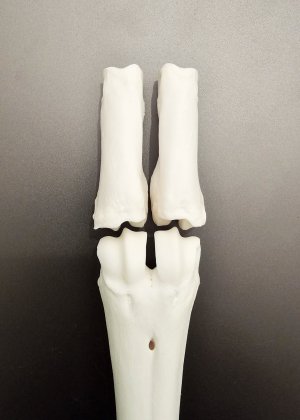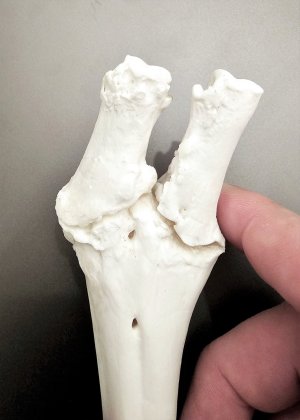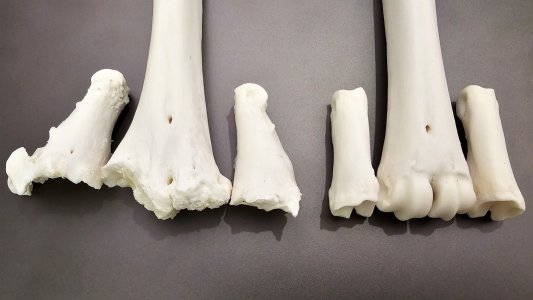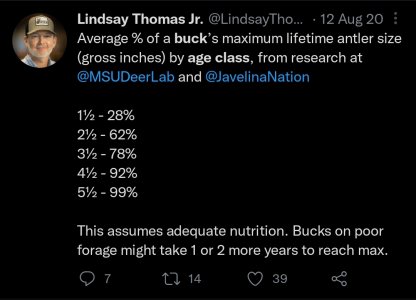Circling back around to post #56 in this thread where I mentioned I harvested the buck that inspired my original opening post -- with the original post questioning how a handsome young 8 frame didn't show much change over the next few seasons.
In that post, I shared how he definitely had a pronounced limp, and that a review of game camera captures showed the limp had been a long-term issue getting progressively worse and not some short-lived battle wound. The photos in post #56 showed one leg having obvious swelling and with the buck's hooves turned at a fairly dramatic angle.
Soaked the legs in water until they were completely clean... and here's what was revealed. Start with a share of the healthy front leg...

Now for the other leg...

A side-by-side comparison...

The difference in the time it took to cold-water macerate the legs was kind of crazy. The healthy leg finished up at least a week or two before the malformed one. While the joints swiveled freely in the healthy leg, there was not only absolutely ZERO swiveling in the malformed one, but the bone seemed almost fused at the joint with what seemed like additional fibrous tendon-like connections around the impacted joint. There was no apparent cartilage between the malformed joints, and with so many spiny protrusions and zero buffer between the joints I can't even imagine how much it was hurting him... though he still was doing occasional chasing during rut until the end.
Looks like it could be osteosarcoma (bone cancer), but going back in videos he was doing lighter limping even two full years ago and other than the affected joint and limping, he looked and acted relatively healthy though by the end of each rut he looked a bit skinnier than some other bucks. Or maybe severe arthritis caused by a prior injury and / or infection to the joint? He was missing a dew claw on the malformed foot, so possibly could have had an injury that reached the bone and infected it.
Not sharing to say it was the key or only limiting factor (lots of good discussion on soils, genetics, etc in this thread) but did think it worth sharing as something that sure didn't help him reach his full potential.




